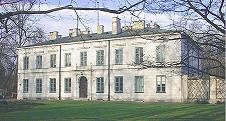Cmentarz protestancki we Wschowie
The Protestant Cemetery in Wschowa
Author(s): Marek ChwistekSubject(s): Fine Arts / Performing Arts
Published by: Krajowy Ośrodek Badań i Dokumentacji Zabytków
Keywords: Wschowa Evangelical congregation; parish church; Protestants; necropolis; Odra river; mediaeval cemeteries; stone epitaphs; Late Renaissance; Baroque;
Summary/Abstract: In 1604, the Wschowa Evangelical congregation was compelled to return a parish church, used since the mid-sixteenth century, to the Catholic parish. The same year, it adapted for cult purposes, two burgher houses situated within the walls of the Old Town. Unfortunately, the area around the ensuing church, located in densely developed urban space, lacked sufficient place for a traditional church cemetery. In this situation, the Protestants came to terms with the municipal authorities, and decided to establish a new necropolis outside the town walls (extra muros), in a suburban landed estate. This was the origin of a Christian cemetery constituting an autonomous whole, the first of its type to the east of the Odra river (1609). Its foundation broke with the almost thousand years–long tradition of locating cemeteries next to churches (ad sanctos et apud ecclesiam ). The only exception were mediaeval cemeteries of the Italian campo santo type, to whose aesthetic programme the Wschowa cemetery referred. The Wschowa Old Town cemetery is invaluable testimony of the historical splendour of the town, and a document containing an enormous amount of information about the life of its residents in the course of more than three centuries. An area of 2,5 hectares, encircled by a wall, contains a considerable number of stone epitaphs, tombstones and cemetery buildings of assorted origin and stylistic features, from Late Renaissance to Third Reich. From the viewpoint of an historian of art, greatest value is represented by Manneristic and Baroque epitaphs; the majority of the 170 objects is well preserved. It is those monuments which are being conserved in the first place (15 objects). Installed in the cemetery walls and in chapels, they comprise complexes connected with burgher families of foremost significance for the history of the town. From the moment of its origin, the cemetery was twice enlarged to the west.After the western wall was pulled down, the epitaphs located there
Journal: Ochrona Zabytków
- Issue Year: 1999
- Issue No: 3
- Page Range: 296-303
- Page Count: 8
- Language: Polish

